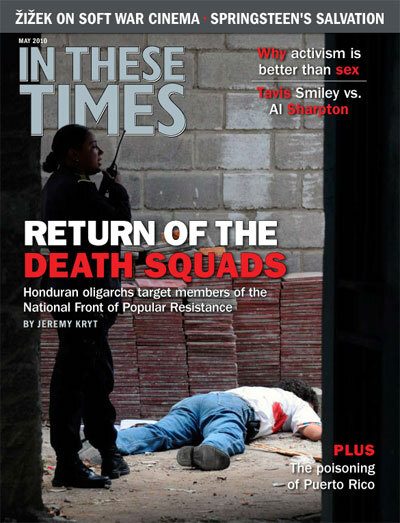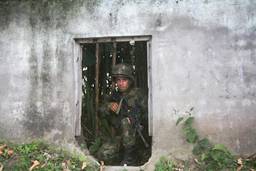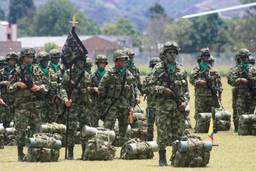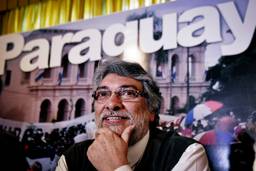Return of the Death Squads
Honduran oligarchs target members of the National Front of Popular Resistance.
Jeremy Kryt
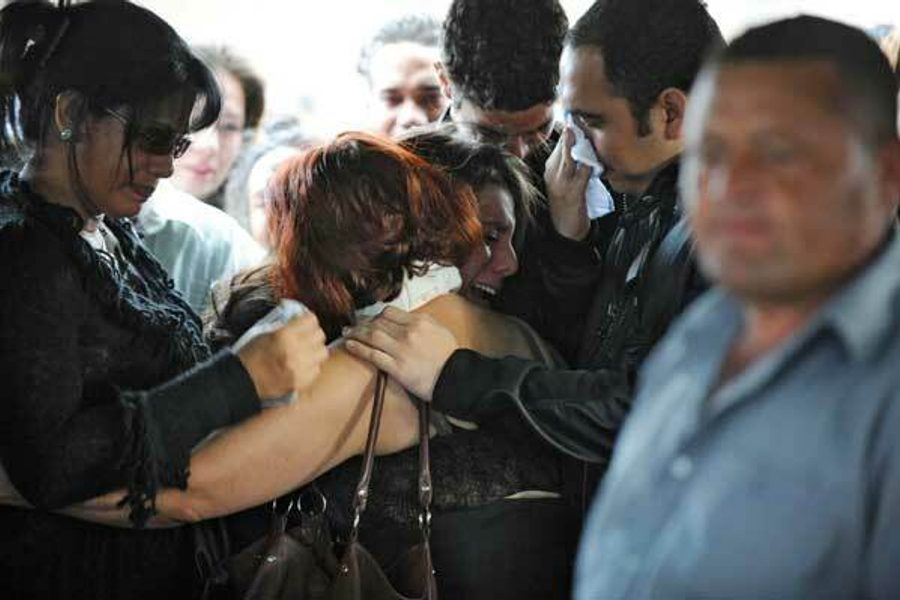
TEGUCIGALPA, HONDURAS – Late in the afternoon on February 3, Vanessa Zepeda, a 28-year-old registered nurse, left a union hall after a meeting and began walking to the supermarket to buy school supplies for her children and formula for her baby girl.
She never made it.
According to witnesses, as she was leaving the union hall parking lot in this sprawling capital city, Zepeda was forced into an unmarked white sedan by two masked men dressed in fatigues.
A few hours after she was kidnapped, her corpse, still dressed in blue hospital scrubs, was tossed from a moving car in the Loarque neighborhood on the southern side of the city – a well-known stronghold of the resistance movement.
Zepeda was a member of the National Front of Popular Resistance (FNRP), which like many countries, including Brazil and Argentina, does not recognize the military-backed government of President Porfirio “Pepe” Lobo, who took office in January after much-disputed elections.
Zepeda was also a leader in the Social Security Workers Union. Prior to her abduction, she had attended the meeting at the Bottling Plant union building to talk about the need to join with other unions to peacefully resist the Lobo government.
“Vanessa was very committed to helping others,” says Bessi Torrez, Zepeda’s mother, in a phone interview with In These Times. (Torrez had agreed to meet in public, but later canceled due to fear of being seen with a foreign journalist.) “She also worked hard to help unite the different syndicates, so that they could consolidate their interests. She sacrificed everything for the Resistance.”
After Zepeda’s body was found, her mother was notified and told to come straight to the morgue, instead of the crime scene itself. When Torrez arrived, she was not allowed to see any of the forensic evidence or investigation records.
“It was very strange,” she says. “The process has been so mysterious.”
Since the coup last June, a number of union leaders have died under equally mysterious circumstances. Many Hondurans believe the military-backed government to be responsible for these assassinations. Of the 43 members of the FNRP that have been killed, about half have been trade unionists.
Gilda Batista, director of the Tegucigalpa-based human rights organization Refuge Without Limits (ASL), has investigated the murder of Zepeda and other recently executed union leaders. Batista says her research leads her to believe that assassination squads are being “financed by the corporatocracy and military.”
Batista believes the targeting of key individuals like Zepeda “sends a message to the Resistance that union members will be murdered if they meddle in the political arena.” In Zepeda’s case, forensics experts finally labeled the case a homicide, but still have not disclosed any details about the cause of death. More than three weeks after the autopsy, Torrez is still awaiting an explanation from the government concerning her daughter’s murder.
“[The Lobo government] knows that the trade unionists are one of the biggest threats economically. The labor movement has been really central to the resistance,” says Dana Frank, professor of history at the University of California, Santa Cruz, in an interview in a Tegucigalpa human rights office. “In Tegucigalpa, many of the biggest Resistance meetings are happening in the Bottling Plant Union building. The unions are a direct economic threat [because] they have a larger vision for Honduras.”
There are no government statistics detailing how much of the country’s workforce is unionized, but according to the office of the Honduran Labor Secretary, there are currently 527 different syndicates, or workplace-based unions, representing both public and private Honduran workers.
’80s-style death squads?
Although the U.S. State Department does recognize the Lobo government, assassinations of union leaders and other human-rights abuses in Honduras have reached such a pitch that nine members of the House of Representatives sent a letter to Hillary Clinton in early March, asking the secretary of state to investigate the violence.
“I am extremely concerned that U.S. attention to ongoing human-rights abuses in Honduras will wane now that the acute political crisis has ended,” Rep. Jan Schakowsky (D-Ill.) wrote in an e-mail to In These Times. “It’s tempting for the United States to immediately normalize relations and resume aid now that Honduras has held elections, but I believe that we need to keep the focus on the serious violations that continue to occur.”
Rep. Schakowsky, who traveled to Honduras on a fact-finding trip in November 2009 and signed the March letter, says she saw the deterioration of human rights “firsthand.” “I am extremely concerned that these abuses are continuing under the new government,” she wrote.
Frank, author of Bananera: Women Transforming the Banana Unions of Latin America, is especially concerned about the ongoing assassinations. Five journalists and 13 members of the FNRP were gunned down between March 1 and April 8 alone. Of those 13 FNRP victims, nine were active union members, including one teacher who was shot in front of his students as he lectured, according to the Honduran Teachers Association (COPEMH). Frank believes paramilitary forces reminiscent of the 1980s – when military-funded death squads terrorized the country – are responsible.
“This has been going on for decades in Latin America,” Frank says. “Private contractors – they’re not officially the military, but they’re paid by the military. … They have their secret lists of people they want to kill in the Honduran Resistance and these people come in the night and beat people up or kill or kidnap them. The Lobo government is supporting this kind of activity. They’re not denouncing it. They’re not investigating these assassinations.”
Frank also pointed out that certain figures associated with internal human-rights violations have recently been given prominent positions of power in the new government. Infamous 1980s death-squad leader Billy Joya is now a special advisor to the Lobo regime. And Romeo Vasquez, the U.S.-trained general who orchestrated the putsch itself, was named to be head of the Honduran national phone company last month.
Honduran Secretary of Labor Felicito Avila Ordonez laughingly dismisses the idea that death squads are operating again. “It’s true, we do have a security problem in the streets, in the markets,” says Ordonez during an interview in his office. “We can’t have peace without employment.”
Honduras’ unemployment rate was at about 51 percent just before last year’s coup. Ordonez declined to provide a more recent figure, saying only, “It’s quite bad.” (According to the Tegucigalpa-based Chamber of Commerce and Industry, more than 100,000 jobs have been lost since the coup.) Replying to a question about what can be done to curb unemployment, the Lobo-appointed labor secretary says, “Confidence! Faith! We know the government must be more transparent. This will be a more Christian government!”
Ordonoz, a former trade union leader, says he feels loyal to both workers and employers, and that the Lobo government’s official attitude toward the unions is one of peace and reconciliation. “But we can’t have anarchy,” he says. “Laborers must respect how the law works.” When pressed to provide an explanation for the recent killing of union leaders, Ordonez replies: “Maybe it’s the Resistance thinking how they can make trouble for the country,” he laughs. “Probably it’s just common crime.”
Frank strongly disagrees.
“[These killings] were made to look like common crimes, but these [victims] are all people involved in the Resistance. The military is being very clever,” she says. “They’re not knocking off the top leaders. They know that if that happened, they would have a tremendous international reaction. So instead they’re going after people in the middle. It’s a form of state terror.”
Maquila oligarchy
Like other countries in Latin America, Honduras has long been dominated by the economic interest of the north. For decades, banana corporations familiar to Americans – like Dole and United Fruit (now Chiquita) – controlled the economy and the government. “Honduras is the original banana republic,” Frank says. But because of the lucrative and labor-intensive trade of which they were part, workers on Honduran plantations have historically been able to demand good contracts, including wage increases, healthcare and even anti-domestic violence workshops.
However, as the country’s economy has diversified in recent decades, other trade unions within Honduras have been unable to equal the success of the banana workers. This is because of the uniquely massive nature of the banana industry, which employs organized workers suffering under similar circumstances throughout Latin America – workers who could wield tremendous cumulative power if they strike together.
But even the once-powerful banana unions are under threat. Dole and Chiquita have developed a common strategy of selling off fincas (or plantations) to smaller independent subcontractors, who refuse to honor previous labor contracts.
“[The banana unions] still have vestigial power because they are so well-coordinated across the banana sector in Latin America, and with strong solidarity ties in Europe and the U.S. But [that power is] always being chipped away,” Frank writes.
Other cash-crop workers in Honduras are on less equal footing.
Farmers in the highly lucrative African palm industry “are obviously exploited,” Jose Serrano, coordinator of the Committee of Popular Organizations of Aguan (COPA), tells In These Times. The Aguan basin, on the Caribbean coast of Honduras, has been the scene of an intense, five-month stand-off between palm oil workers, and the military dictatorship. Poor farmers were originally granted collective land rights by the Agrarian Reform Law, enacted in 1962. But since then, both Honduran and transnational companies have illegally re-purchased the valuable farms resulting, says Serrano, in the farmers once again becoming powerless, low-wage serfs.
In response, the palm workers (the oil is used in cooking products worldwide) have peacefully but “permanently” occupied several plantations in the district. According to COPA, these pacifist actions have resulted in the death of seven farmers so far, as private security forces have repeatedly opened fire on the campesinos, in attempts to drive them from their land.
“On the palm-oil fincas, the workers receive just 95 lempira (about $5) a day,” Serrano says. The farmers who have occupied the plantations in the Aguan Basin finally rose up, he says, because they were “existing without sufficient food or clean drinking water. A typical work week is six or seven days long.”
In other GDP-leading industries like lumber and tourism, and within the factory system, unions have been successfully discouraged. Workers in maquilas – transnationally owned factories that operate in tax-free zones to manufacture things like textiles, garments and athletic shoes for export – are essentially powerless, according to Honduran workers’ rights activists, despite their great numbers.
“As for maquiladoras, the sad fact is that almost no one, anywhere in [Latin America] has been able to establish unions that last,” Frank says. “There are a handful of organized factories in Honduras, but usually everyone just gets fired and blacklisted as soon as they sign the petition asking for an election.”
A representative for Honduran maquila workers agrees.
“If the girls try to organize at all, the leaders are fired right away,” says Maria Luisa Regalado, coordinator general for Honduran Women’s Collective (CODEMUH), an NGO that specializes in the maquila sector. The average maquila worker in Honduras earns 121 lempira (about $6.40) per day, Regalado says during an interview in the industrial city of San Pedro Sula. From this wage, women – and most maquila workers are female – must pay for transportation, housing, food and day care.
“The owners don’t want unions in the factories, because there are so many workers, and such a union would be too powerful for them,” she says. According to CODEMUH, maquila workers in Honduras number more than 130,000 people. “And yet these companies don’t pay any taxes, they give nothing back to the communities. They steal our labor and pay nothing for it. It is unjust and inhuman,” Regalado says, referring to companies like Hanes, Active Wear and Loveables.
A spokesperson for a public-relations company that represents maquila owners insists that nothing is amiss. “The maquilas bring a lot of good to those communities,” says Tesla Callejas de Flores, communication and marketing coordinator for the Honduran Manufacturers Association, based in San Pedro Sula. “When these women have jobs, they have equilibrium in their lives. For instance, they may not need to feel dependent, or stuck in an abusive relationship with a man. That’s why so many people want to work here.” Maquila owners have a “deep respect for workers rights” and all workers receive “full medical benefits” after a job-sustained injury, she says.
Regalado, however, tells a different story. “There is very little compensation for injuries, despite what they say,” she says, citing the case of Reina Quintania, a 22-year-old woman who lost one eye and suffered damage to the other as the result of an on-the-job accident in a Hanes factory. “They removed [the object] from her punctured eye, treated her with simple first aid in the infirmary, and then sent her back to work,” Regalado says. “Afterwards, they only paid for 35 percent of Reina’s medical bills. Now the girl is practically blind, and she can’t work, and she’s in debt for the operation she had to undergo. And of course [Hanes] doesn’t offer any kind of disability for injured workers. Since they aren’t allowed to unionize, the workers are helpless.”
The Honduran Manufacturers Association denied any knowledge of the Quintania case.
Teaching resistance
“We have a very unified movement, a very representative movement,” says FNRP leader Rafael Alegria, who is also president of the powerful Honduran farmworkers union Via Campesina. “We demand an end to the violence and repression. We support the laborers, who continue to receive death threats. We support the unemployed, who have a right to work.” Alegria spoke after a Feb. 25, 2010, march in Tegucigalpa on the National Congress building by approximately 60,000 members of the FNRP, which has modeled itself on nonviolent social movements.
The FNRP also continues to push for a better public education system, a goal held by ousted President Manuel Zelaya. The country’s education and literacy levels are seriously compromised by endemic poverty, and the student-teacher ratio is on average 40-to-one. The day after soldiers kidnapped and exiled Zelaya in June 2009, tens of thousands of teachers went on strike.
‚”Zelaya had actualized free education for all Hondurans, as is stipulated in the constitution,” says Jamie Rodriguez, president of COPEMH, one of the country’s largest teachers unions. Although last year’s strike has now ended, Rodriguez says the teachers are still playing a vital role in the FNRP. In late April, they began conducting a nationwide poll to determine if there is democratic support for the creation of a constitutional assembly. (Zelaya was swept from office for his willingness to allow a similar referendum.) The goal is to collect signatures from at least half of the Honduran electorate.
“This is our chance to re-found our country,” Rodriguez says, adding that the new constitution would do away with “laws designed only to serve the rich.”
Zelaya had set up government programs to pay for lunches, travel to schools and tuition. Zelaya’s reforms allowed about 450,000 children to begin attending school, “but all of that was canceled after the coup,” Rodriguez says.
He had done more than just help students. The economy made significant strides while he was in office, according to a study published by the Washington-based Center for Economic and Policy Research. The country’s GDP increased an average of seven percent annually during Zelaya’s first two years in office, and the percentage of Hondurans living in poverty dropped from about 66 to 61. But many experts say it was precisely this slight leveling of the economic playing field that angered the dozen or so wealthy families that have traditionally ruled Honduras and led to the military coup against the president.
Putschists in power
In the months following the coup, 155,000 jobs were lost and the poverty rate began to grow again as wary governments cut foreign aid. Tourism, the third-largest industry in Honduras, fell by 70 percent. The cost of mobilizing police and armed forces – estimated at about $50 million U.S. dollars per day during the weeks Honduras was under martial law after the coup – as well as the general economic slow-down, resulted in the second-poorest nation in Central America declaring bankruptcy in February.
Due to public concern about human-rights abuses and top-level corruption in the central government, just 49 percent of the Honduran electorate turned out for the ballot vote that brought Lobo to power last November. Many observers have claimed that elections under the military-imposed government were neither free nor fair.
The Lobo government has tried to fight the public’s perception of corruption. “Suddenly on the television here in Honduras, we’re hearing all about campaigns against corruption,” says Frank, referring to a series of advertisements produced by Lobo, who backed the putsch against Zelaya. “Well, who are the corrupt people? Who are the people who have been robbing the coffers of this country for decades? Who are the people that take humanitarian aid and line their pockets with it?”
“Now the new, illegitimate Lobo government says it wants reconciliation,” says teachers union leader Rodriguez. “They talk about wanting peace, but they are still killing people in the streets.” Some teachers particularly vocal in their opposition to the government have stopped receiving pay checks, Rodriguez says, and police recently gassed a “dissident” school while teachers and students were still inside. In all, according to COPEMH’s Rodriguez, five teachers have died in politically motivated assassinations since the coup, and one has disappeared.
Alegria says the Lobo government appears to be little more than an extension of the regime of Roberto Micheletti, who became de facto president after the coup. “The power structure is still intact. The same Congress that backed the coup. The same military junta – all the same putschists in power,” Alegria says.
Rep. Schakowsky is worried about these trends, as well as the cozy relationship the Lobo government has so far enjoyed with the U.S. State Department. “I hope the secretary [Clinton] will look into the reports of human rights abuses,” she wrote to In These Times. “Human rights considerations must be part of any process of aid resumption and diplomatic normalization.”
But for those who have lost loved ones at the hands of the military regime, normalization will be a long and painful process. “I want justice,” says Torrez, mother of slain union leader Zepeda. “Not just for Vanessa, but for all those who have lost their lives for the Resistance.”
This article is an updated version of the May 2010 cover story.
